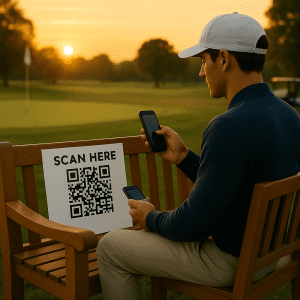Augmented Reality Flyer Marketing Is No Longer Just for Big Brands
When most marketers think of AR (Augmented Reality), they imagine big-budget campaigns from global giants—Nike, IKEA, Coca-Cola. But thanks to rapid tech evolution and affordable tools, Augmented Reality Flyer Marketing is now within reach for small and medium-sized enterprises (SMEs).
And it should be.
In a market flooded with static visuals and digital noise, AR flyers give SMEs a powerful tool to break through, capture attention, and deliver interactive experiences in the physical world—on coffee sleeves, brochures, door hangers, or even pizza boxes.
But let’s be honest: AR sounds expensive. And for SMEs, every marketing dollar matters.
So, is the investment worth it? In this blog, we’ll break down the true costs, expected returns, and strategic advantages of launching an AR flyer campaign for your brand—so you can decide if it’s the right fit for your next move.
What Is Augmented Reality Flyer Marketing?
At its core, Augmented Reality Flyer Marketing overlays digital content—videos, animations, 3D models, or interactive CTAs—onto a printed flyer or material. Users unlock this content using their smartphones, creating an immersive brand experience in seconds.
AR flyers blend the tactile power of print with the visual engagement of digital, leading to higher recall, interaction, and emotional resonance.
🔁 Related formats:
Augmented reality print marketing
AR flyer advertising
Augmented reality direct mail
AR brochure marketing
Augmented reality leaflet promotion
These are all variations of the same idea: using interactive print to stand out.
Why SMEs Should Consider AR Flyer Advertising
Big brands may have pioneered AR, but SMEs have more to gain:
✅ Level the Playing Field
AR closes the perception gap between small and large businesses by making your brand feel modern, tech-forward, and relevant.
✅ Engage Offline Audiences
With foot traffic returning to stores, in-hand marketing (a core Adzze strength) paired with AR becomes a tangible touchpoint in high-dwell environments.
✅ Extend Print ROI
Traditional flyers have short lifespans. AR transforms them into gateways to video, e-commerce, promotions, or data capture—multiplying their impact.
Cost Breakdown: How Much Does Augmented Reality Flyer Marketing Really Cost?
Let’s talk numbers. While every campaign is different, here’s a general cost structure for SMEs.
Component | Estimated Cost (USD) |
AR Platform Subscription | $50–$300/month (starter plan) |
Design and 3D Content Creation | $500–$2,000 |
Flyer Printing (5,000 units) | $300–$700 |
Campaign Management | Optional, $500–$1,500 |
Total Campaign Estimate | $850–$4,500 |
Lower-cost tools:
Platforms like Zappar, BlippAR, or 8thWall offer SMB-friendly plans with templates, drag-and-drop tools, and analytics dashboards.
The Return: What’s the ROI of AR Brochure Marketing?
According to case studies and industry benchmarks:
2x higher engagement than traditional print
Up to 70% increase in message recall
Conversion uplift of 25–40% when linked to e-commerce or special offers
Scan rates of 15–30% vs. 1–2% for static QR codes
For SMEs, this means spending smarter, not necessarily more.
Case Study: How a Local Fitness Studio Used AR Flyers to Fill Classes
Business type: Boutique fitness studio
Campaign format: AR-enabled flyers distributed at local juice bars and gyms
Activation: Users scanned to see a 30-second 3D walkthrough of a new yoga class
Call to action: Book a free trial via embedded link
Results (in 3 weeks):
1,200 flyers distributed
240 scans (20% scan rate)
78 trial class bookings (6.5% conversion)
32 memberships sold (ROI: 3.8x campaign cost)
This kind of hyperlocal AR flyer advertising proves that even small brands can generate measurable lift when campaigns are well-executed.
Benefits of AR Flyer Advertising for SMEs
🔹 Memorable First Impressions
3D animation or video makes your brand unforgettable, especially for first-time customers.
🔹 Analytics You Can Act On
Track engagement rates, locations, dwell time, and more—just like digital ads.
🔹 Multilingual or Multiregional Targeting
AR content can adapt by user location or device language, making your AR brochure marketing globally scalable.
🔹 Seamless Retargeting Bridge
Once a user engages with your AR experience, you can retarget them via Meta, Google, or SMS.
Tips to Maximize the Value of Augmented Reality Leaflet Promotion
✅ Keep the Experience Short and Sweet Aim for 30–60 seconds of interaction. Highlight one CTA, not five.
✅ Use a Clear Call to Action “Scan to see it in 3D,” “Try before you buy,” or “Tap to unlock offer” guide users through the experience.
✅ Promote the Scan Behavior Don’t just print a QR code. Add icons, sample screenshots, and instructions. Visual cues drive adoption.
✅ Test and Optimize Use A/B testing with different visuals or messages and track which performs best using built-in analytics.
Challenges to Watch For
❌ Perceived Complexity
Solution: Use AR platforms with prebuilt templates and support for SMEs.
❌ Low Adoption Without Clear Guidance
Solution: Add icons, step-by-step scan prompts, and incentives like “Scan to get 10% off.”
❌ Higher Design Demands
Solution: Start with light AR (e.g., image-triggered video overlays) and scale to 3D as needed.
Final Thoughts: Is Augmented Reality Flyer Marketing Worth It for SMEs?
The short answer: yes—when done strategically.
While it’s not the cheapest form of print marketing, Augmented Reality Flyer Marketing offers small and medium-sized businesses a way to:
Punch above their weight
Deliver immersive brand moments
Measure real ROI from print
Stand out in saturated markets
And with platforms becoming more accessible and budgets easier to manage, now is the time to explore AR flyer advertising—before your competitors do.






